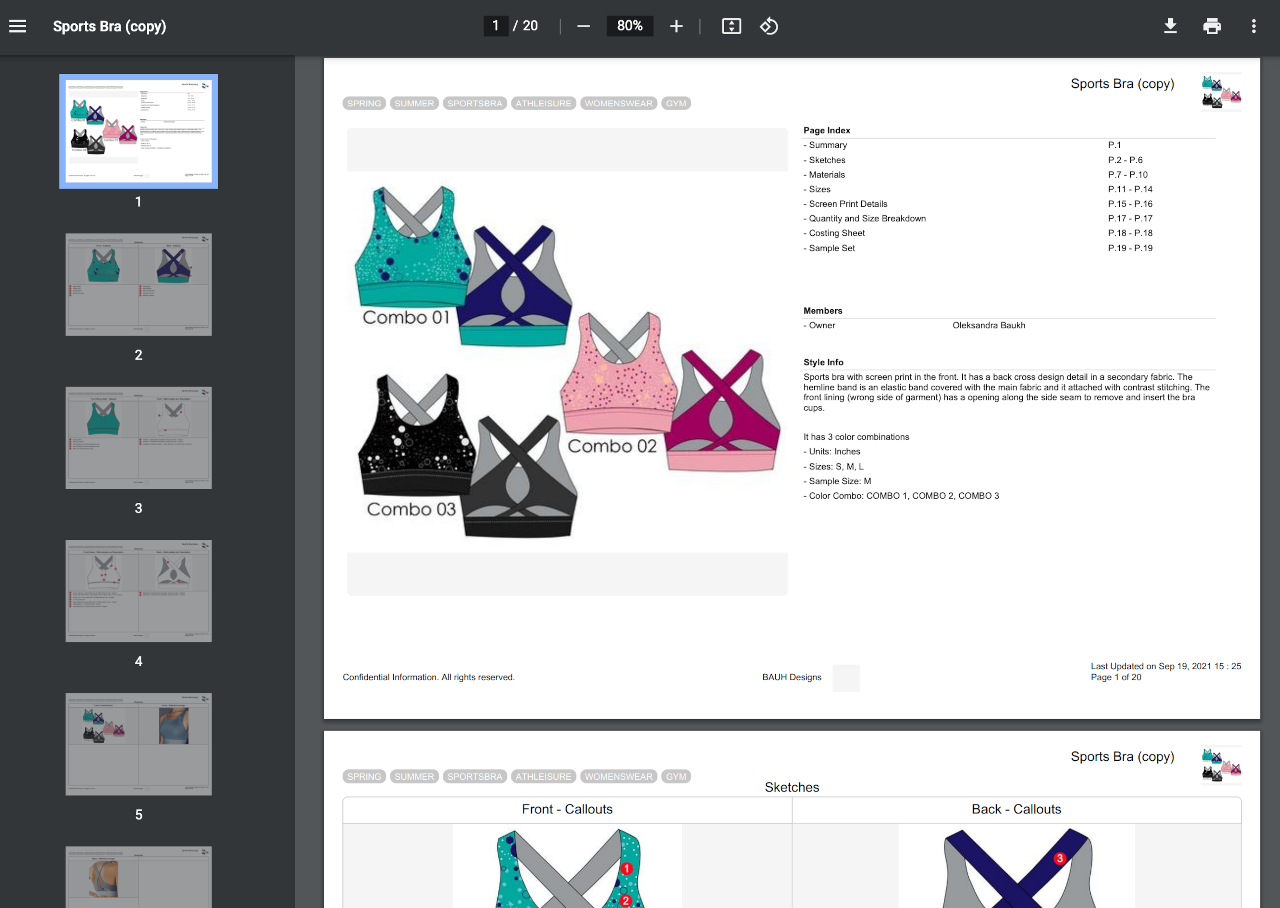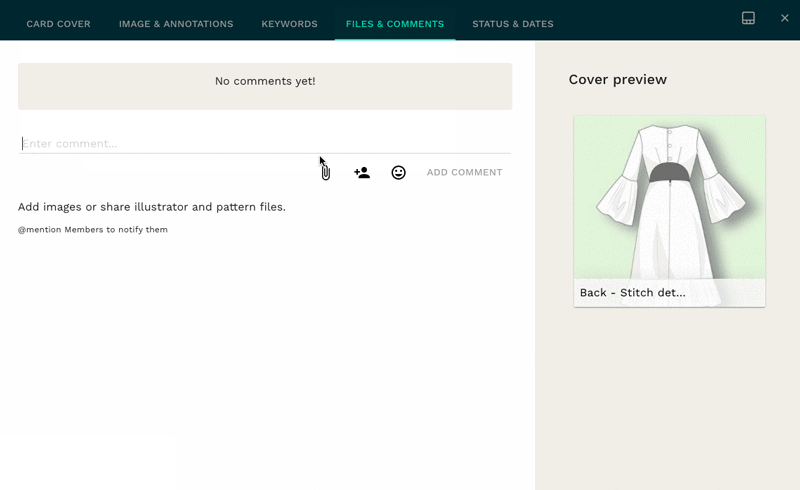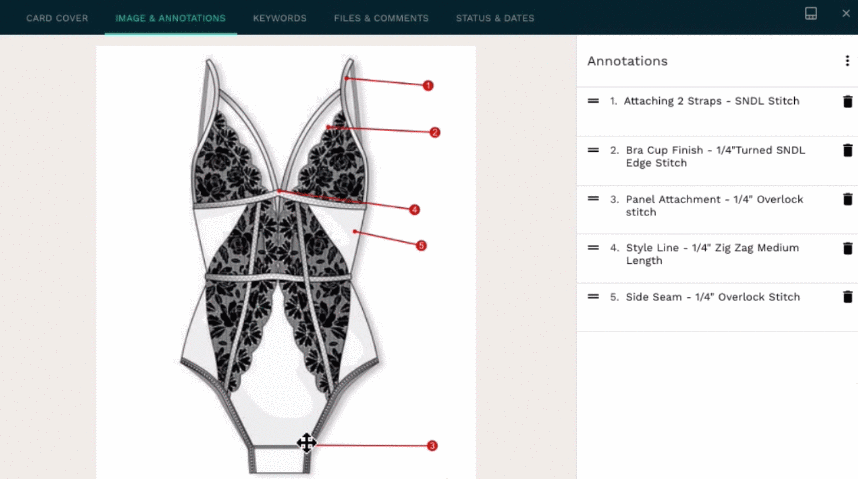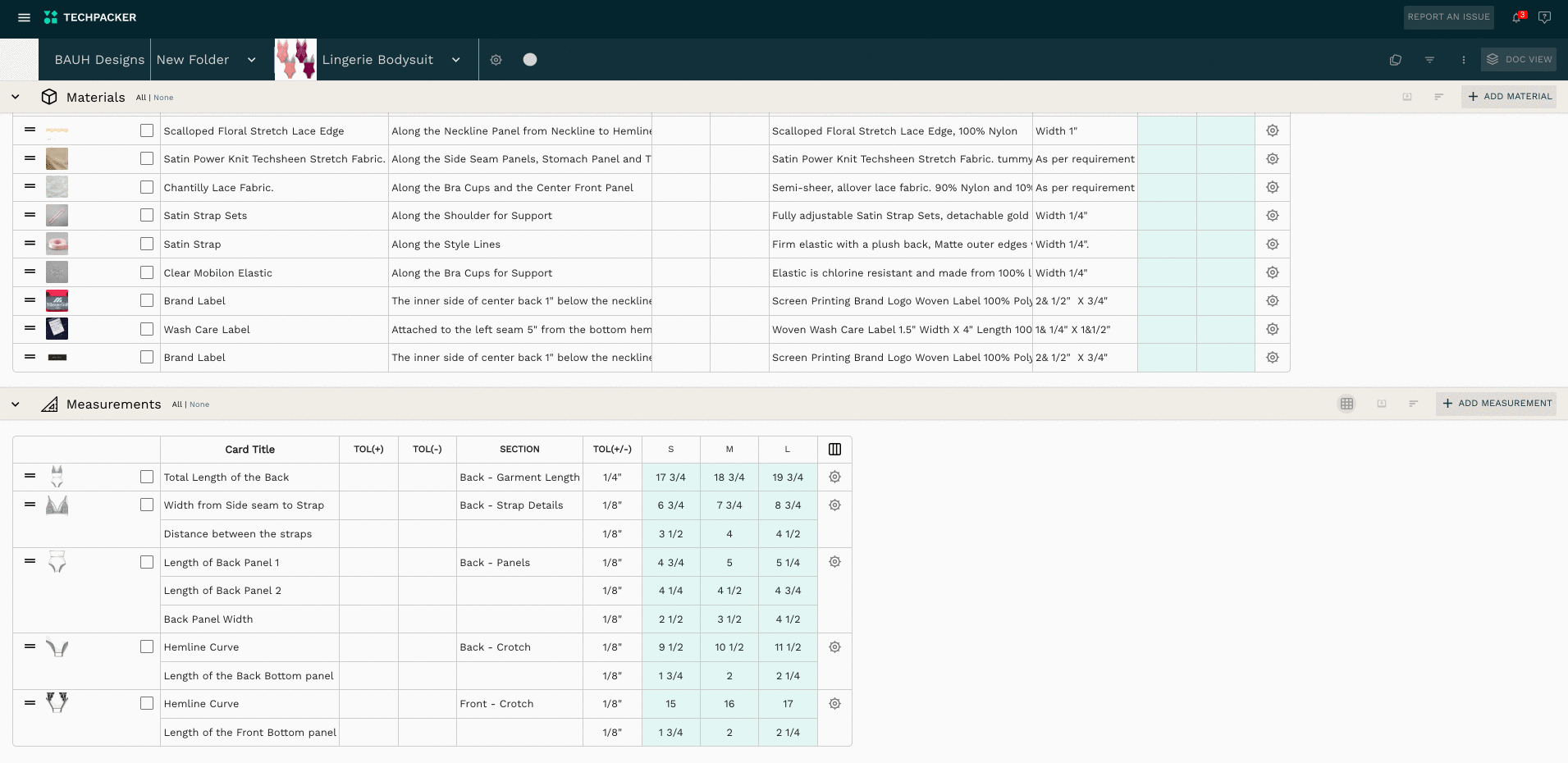Contents
PLM software was once a luxury that only big fashion brands could indulge in. Smaller players had only rudimentary tools to help them produce at a competitive price and get their products on time.
That’s no longer the case.
SaaS cloud solutions have leveled the playing field. And new realities in the fashion industry have made PLMs a must-have for small and large teams alike.
Here are 6 reasons why growing fashion teams should now embrace cloud PLM
The need for speed in fashion demands it
They say Fast fashion is the name of the game. As a fashion brand, you’re expected to continuously reinvent products and speed up your time to market.
But we are well aware of the environmental cost of fast fashion. Especially when operating on traditional manufacturing models with its high MOQs, leading to over-production, excess stock, and long lead times.
You need a faster and more agile production method to thrive in today's retail landscape. Something geared toward small businesses, something that will let you stay nimble and make decisions on the fly. In other words: on-demand manufacturing.
Ordering in small, quick batches will let you prototype seamlessly and test the market continuously.
But you’ll need 3 things to take full advantage of this production method:
● A holistic view of your entire product development process in one snapshot.
● Granular control over every part of your product design.
● Real-time, uniform data across your entire supply chain.

A solution like Techpacker grants you all three. This trifecta will let you iterate faster since everyone has access to up-to-date information where and when they need it. Plus, real-time access to data makes collaboration easier between your team & manufacturers for quick responses to design changes and re-orders.
Some cloud PLM works like regular apps now
Successfully implementing new tech in your team has a lot to do with the day-to-day feel. In other words: does this new technology feel right? Does it actually make my work faster and my life easier?
You’ll get a resounding YES much more often if your software doesn’t feel like a clunky mess straight from the 90s.
Cloud PLM for the fashion industry is a relatively recent arrival to the software market compared to old-timers like ERPs. That’s good news. It means cloud PLMS aren’t weighted down by legacy code and creaking infrastructure. It means that their interfaces aren’t reskinned of crappy back-ends. Some solutions like Techpacker offers a slick, fast, visual, and super intuitive workspace.
People don’t like change. They get cranky when you take away the tools they know. But if you replace them with tools that work like the apps in the rest of their lives - apps like Facebook, Instagram, or Pinterest - then they’re more like to embrace this change and benefit from it.
You can’t afford silly mistakes
Mistakes due to manual errors are all too common. This is especially true if your team is sticking to the old-fashioned way of managing and communicating product data: Excel + Email. Every time someone enters data into a spreadsheet, there’s the possibility of a typo, overwriting key data, miscopying something, or putting data in the wrong place. Basically, every time a manual data entry happens, there’s a micro risk. Over time, using Excel adds up to riskier product development and production process.
These risks could slowly creep in, and compound until:
● They increase your costs as built-in waste, rework and defect costs.
● They increase your time to market due to rework and wasting time locating files.
But the ultimate cost here is the loss in productivity and creative potential.
Every hour spent on low-value tasks like locating files, sending emails, retyping the same tech pack info - is an hour not spent on improving your design and bringing your product to life. Especially for small fashion brands- where resources are tight, this kind of inefficiency can make or break a business.
A cloud PLM removes drastically reduces the number of human errors.
Not only does it make product data accessible, but it also automates the process of communicating, sharing, and organizing data.
Team members can be instantly notified of any updates, changes can be automatically highlighted and versions are time-stamped and categorized for you.

By streamlining processes prone to human error like communicating changes and updating information cloud PLMs reduce project risk and keep things running smoothly.
Implementing a PLM now lays the groundwork for future growth
Even as a small fashion brand, you need to keep track of many details in the development phase of just one single product. This includes:
● Designs/sketches
● Measurements
● Materials
● Comments
● Approvals
Now, imagine when you start growing. That means more collections, more suppliers, more team members...more data.
Keeping track of everything in a spreadsheet can quickly become a nightmare. Errors, delays, duplicate work just don’t work if you want to one day compete with the big names. You’ll eventually hit a point where it’s no longer possible to manage everything with Excel and email.
This is where a robust tech solution comes in.
A cloud PLM like Techpacker lays the foundation for future growth by giving your team:
- Real-time, laser-focused communication
- A shared version of the truth across your entire supply chain
- The power to automate manual tasks to increase efficiency and reduce errors

On top of that, cloud PLMs scale with their users. That means as your brand grows, the software grows with you, without the need to update or buy new servers.
Costs and implementation time have come down by A LOT
Companies used to shell out tens of thousands of dollars to buy PLM software licenses. That’s not even including implementation fees, integration fees, training fees, data migration costs, etc. And implementing the software used to take months, and require consultants and technical staff to the tune of a few more thousand.
With the advent of software-as-a-service (SaaS), you get to pay a monthly fee to access the PLM over the web. No more software or hardware to buy, install, maintain or upgrade. This cuts both the cost and implementation time of a fashion PLM to a fraction of what it was only a few years ago.
A lightweight solution like Techpacker will net you 515$ a month for 15 users (vs 1200$ to 2250$ for your average PLM). And implementing it will take a matter of days. The low upfront cost makes this option a no-brainer for small fashion teams.
Note: Beware of some traditional PLM vendors claiming they’re SaaS cloud solutions. In reality, they are just offering a new delivery mechanism for an existing on-premise solution. Implementations remain long, custom integrations remain the norm, and hosting costs remain high.
You hold an advantage over big brands
When it comes to implementing PLM in fashion, there’s a certain level playing field. Not just because they are cheaper and easier to implement than before, but because big brands are stuck with legacy systems. Their PLMs have been installed for over 10 years and are missing many of the latest functions. Yet having invested so much time and money implementing them, large companies are reluctant to replace these fossils.
Result: Their creative designers are looking for loopholes. Adoption is low. They aren’t as fast and efficient as they could be. And there lies your opportunity.
As a small team, you’re starting from a clean slate. Plus, you also don’t need to weigh yourself down with a complex full-suite solution. Something like Techpacker is a much better fit for small brands. No bells and whistles.

But it does a few things that fulfill your real needs better:
- Your design elements are displayed visually.
- You build and manage your fashion products like playing with Lego blocks. (Read more)
- You drag and drop instead of upload.
- Creating and copying specs is effortless.
- You can perform lightning-fast updates on your tech packs.
Less is more: Is Techpacker a PLM?
Yes and no.
Techpacker takes a more minimalistic approach compared to a conventional PLM. You can expect all the essentials you get from a PDM / PLM software combo: tech packs, versioning, bill of materials, design library, costing, etc. But in a far more intuitive and visual platform.
What it lacks in bells and whistles, it makes up for in fulfilling designers' and product developers' real day-to-day needs.
To learn why Techpacker is a better fit for small fashion teams than a traditional PLM, check out our Techpacker vs PLM post.
Behind the scenes PLM upgrades for Techpacker:
● Techpacker now provides integrations with ERP systems, Shopify, and open public APIs that can be integrated with different supply chains.
● Our community marketplace Explore houses a library of sketch templates and material sample ideas from where you can draw inspiration, source materials from suppliers, and find suitable freelancers or forecasting agencies.


